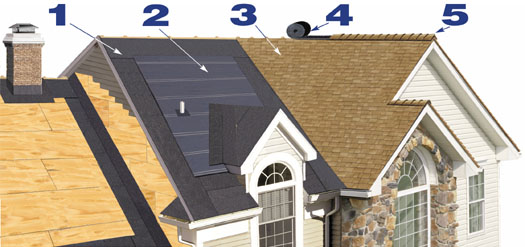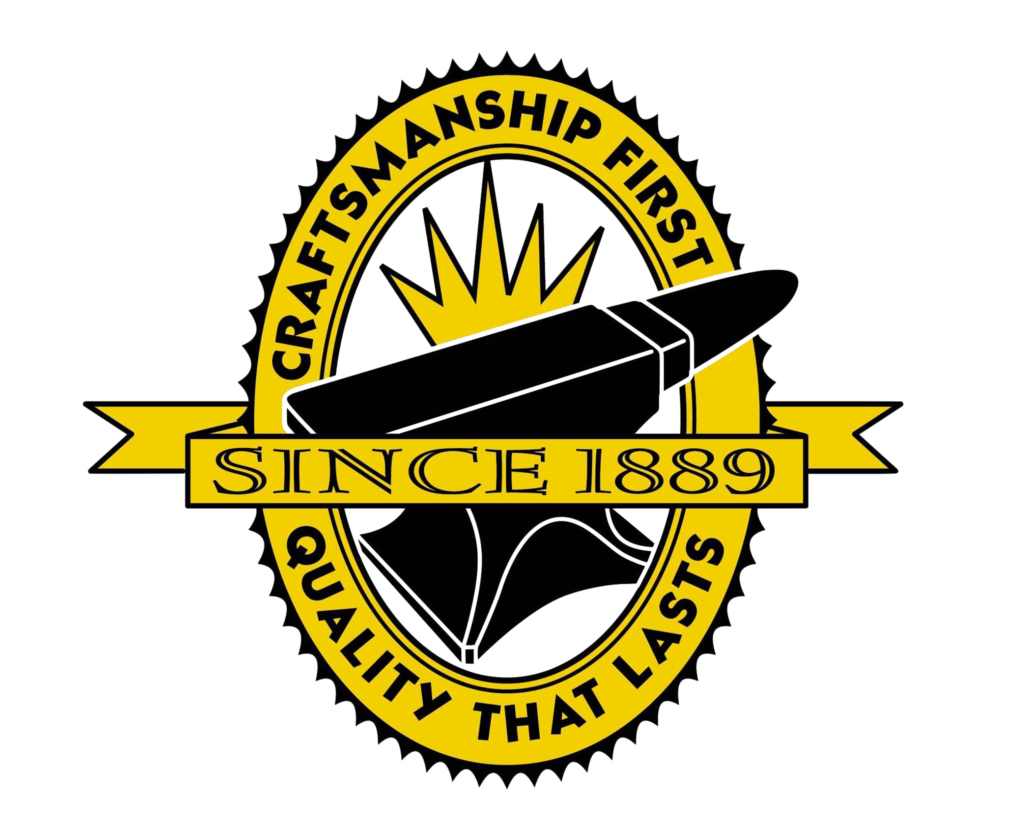
1) Extra Layer of Waterproofing Material in critical potential leak areas such as valleys.
2) Underlayment to protect the shingles from heat and mildew
3) Quality Roofing Shingles from a supplier that stands behind their product
4) Ridge Vent to provide efficient attic ventilation to prevent premature shingle failure
5) Special Ridge Cap designed to compliment the shingle and enhance the appearance
1) Can you provide a Certificate of Insurance? This question should be asked before you let an estimator, salesman or workman on your roof. If one of them falls from your roof and is hurt, YOU as the property owner are responsible if the roofer is not insured.
2) How long have you been in business under your current name? If you have a twenty year roof installed, you want a company that will be there to stand behind the warranty.
3) Are your technicians factory trained? At least 50% of our customer calls are about improperly installed roofing that sometimes requires a complete removal and a new roof to correct.
4) How will you flash areas such as chimneys and walls? This is one of the most common roof failures. The flashing should be turned into the wall and then caulked, not just nailed and caulked at the top.
1) Nailing the bottom edge of the flashing to hold the metal down
THE PROBLEM
This makes the shingles lie flat to give a better appearance. However, when it rains, the water will run over the nail and through the nail hole, causing a leaking roof. Once again, appearances can be deceiving!
THE QUALITY SOLUTION
Flashing should be done in such a manner that never leaves a nail exposed to the flow of water. Normally, the flashing is nailed at the top, then overlaid with a shingle, and then another piece of flashing with at least 1 ½” overlap. This procedure is followed all the way up the edge of the roof. The only visible flashing is the portion that is turned up against the wall or chimney, with the other portion covered by shingles with no nails exposed to water.
2) Nailing the Flashing to a Chimney or Wall and Caulking the Top
THE PROBLEM
This is usually the quick solution when a replacement roof is installed. The existing flashing or new flashing is simply nailed to the brick or stone then a bead of caulk is used to seal the top of the flashing. Nailing can cause the mortar or bricks to crack, which allows water into the wall or chimney. Also, over time the metal flashing contracts and expands with temperature changes. This can separate the caulk from the wall causing another opportunity for a leak
THE QUALITY SOLUTION
The mortar should be removed and the flashing should be turned in to the wall. Then metal shims are forced in to the joint to insure that the flashing does not come out. Next, mortar caulk is used to fill in the remaining space where the mortar was removed.
3) Installing siding flush on the roof
THE PROBLEM
This causes rain to carry trash under the siding, allowing water to back up under the shingles and cause a leak. Also, when a new roof is installed, the siding has to be removed to install new flashing.
THE QUALITY SOLUTION
Start the siding approximately ¾” above the roof. This allows a clear path for the rain to run off the roof. Also, whenever you must have a new roof installed, the new flashing can be installed without removing the siding.
4) Shingles become loose from the effects of wear and wind
THE PROBLEM
On a standard three tab shingle, nailing patterns and nail placement can vary among installer. Often only three nails are used which can void the warranty. Also, if the nails are not placed in the nailing strip above the water table, the shingles can come loose and cause leaks.
THE QUALITY SOLUTION
The proper nailing placement is printed in each bundle of shingles. Each three-tab shingle should have four nails, one on each end and two in the middle in the nailing strip. This assures the shingles will withstand the effects of the wind. And by placing them above the water table, leaks are avoided.
REMEMBER
A cheaply priced roof may not be less expensive!
OUR COMMITMENT
As a company, we are committed to doing your work on your property as if it were our property. Over 50% of the calls we received are due to improper installation and improper flashing. In some cases, we have to remove an almost new roof and replace it because it cannot be repaired. We have been in business over 130 years and our motto is: We are not GOOD because we are OLD – We are OLD because we are GOOD!
Some of our current customers are children and grandchildren of our original customers. Quality does matter and just remember – Cheaper is not necessarily less expensive!

H.E. Parmer Company | © 2024 All Rights Reserved. | We Accept Mastercard/Visa.